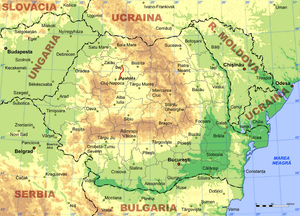Apahida – Dej railway line
| Apahida-Dej | |||||||||||||||||||||||||||||||||||||||||||||||||||||||||||||||||||||||||||||||||||||||||
|---|---|---|---|---|---|---|---|---|---|---|---|---|---|---|---|---|---|---|---|---|---|---|---|---|---|---|---|---|---|---|---|---|---|---|---|---|---|---|---|---|---|---|---|---|---|---|---|---|---|---|---|---|---|---|---|---|---|---|---|---|---|---|---|---|---|---|---|---|---|---|---|---|---|---|---|---|---|---|---|---|---|---|---|---|---|---|---|---|---|
| Course book route (CFR) : | 401 | ||||||||||||||||||||||||||||||||||||||||||||||||||||||||||||||||||||||||||||||||||||||||
| Route length: | 46.543 km | ||||||||||||||||||||||||||||||||||||||||||||||||||||||||||||||||||||||||||||||||||||||||
| Gauge : | 1435 mm ( standard gauge ) | ||||||||||||||||||||||||||||||||||||||||||||||||||||||||||||||||||||||||||||||||||||||||
| Power system : | 25 kV 50 Hz ~ | ||||||||||||||||||||||||||||||||||||||||||||||||||||||||||||||||||||||||||||||||||||||||
|
|||||||||||||||||||||||||||||||||||||||||||||||||||||||||||||||||||||||||||||||||||||||||
The Apahida – Dej railway is a main line in Romania . It runs along the Little Somesch in northwestern Transylvania .
history
When it was built, the railway line was on the territory of Hungary within the Habsburg dual monarchy . At the beginning of the 1870s, the Hungarian Eastern Railway had connected the largest cities of Transylvania with each other and with the cities of central Hungary. A little later, these lines became the property of the Hungarian state railways MÁV . As a result, several private local railway companies were founded in various regions of Transylvania, which were supposed to connect other areas to the railway network. One of them was the Számostal Railway . This was the first of its lines to build the connection from Apahida on the Cluj-Napoca-Războieni to Dej (Hungarian Dés). This line went into operation on September 15, 1881.
After the First World War , the region came to Romania; the route was taken over by the Romanian state railway Căile Ferate Române . As a result of the Second Vienna Arbitration , the route was temporarily returned to Hungary from 1940 to 1944.
Todays situation
The line is electrified throughout and has two tracks. Several express and local trains run daily. The connection is also of great importance for freight traffic.

